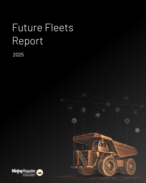The PTG, led by Resources and Energy Minister Martin Ferguson and former BHP Billiton chairman Don Argus, handed down its recommendations on the design and implementation of the proposed Minerals Resource Rent Tax to federal Treasurer Wayne Swan.
In a win for the major miners, the PTG suggested that all current and future state and territory mining royalties be offset under the MRRT, with Swan accepting the recommendation.
This was a back-down by the federal government after previously insisting that only current royalties, not future ones, would be credited to the miners.
In its report, the PTG also said the MRRT should not be used as a “mechanism” to allow states and territories to ramp up “inefficient” royalties.
“Accordingly, the PTG also recommends the Australian, state and territory governments put in place arrangements to ensure that state and territory governments do not have an incentive to increase royalties on coal and iron ore,” the PTG said.
During a media conference, Swan said the federal government couldn’t “give a green light to the states to increase royalties endlessly”.
The report and Swan’s words received a heated response from the mineral-rich states, with Western Australian Premier Colin Barnett saying the state would never back the capping of state royalties by the federal government.
"Western Australia will never agree to imposing a cap on our state royalties,” he reportedly said.
“My advice to Julia Gillard is: have a nice Christmas, a happy new year, sit down quietly and think about it and realise that this tax proposal is a dog. Just get rid of it."
Queensland Premier Anna Bligh echoed the views of her WA counterpart.
“We are very clear here in Queensland that constitutionally as a sovereign state in our own right, we reserve the right to set appropriate royalties which are returned to Queenslanders for the minerals that are taken out of our state,” The Australian quoted Bligh as saying.
“If that has consequences for federal arrangements, then that’s something that would need to be negotiated between the mining companies and the federal government.”
MRRT jitters linger
Association of Mining and Exploration Companies chief executive Simon Bennison said iron ore and coal miners were still worried about the mining tax and its impact on their companies, despite the PTG’s 94 recommendations to the federal government tabled in the report.
“The majority of iron ore and coal miners are still extremely concerned about the implications of the proposed additional tax on their investment and decision-making processes, despite the many recommendations contained in the Policy Transition Group report on the implementation of new taxation reforms,” he said.
Bennison went on to say the report also highlighted the overall complexity and administrative burden the proposed tax would have on both industry and government.
“Any suggestion that the industry has signed off on the report and the recommendations are incorrect,” he said.
“The three large companies that previously met with the government in June-July this year also had no mandate to represent the industry. Their decisions and agreement would have been based on their own business case imperatives, and in the best interest of their shareholders, and not in the interest of their competitors.
“Despite an attempt to placate junior miners by making recommendations around the costs of compliance, the simple fact remains that there will be a significant impact on these emerging mining companies. The recommendations appear to have been geared towards the major companies and not the industry as a whole.”
He also said the PTG failed to address many of the industry’s concerns, including the detrimental impact that such a tax would have on the capacity of emerging miners and mineral explorers to raise equity finance.
The PTG also said today that it did not find there to be a compelling case at present for fiscal incentives to promote exploration in Australia given “the current climate of high commodity prices” and that if there was a case, an exploration refundable tax offset would be considered in preference to an exploration tax credit.
Bennison said he was disappointed that exploration development incentives would not be pursued at this time.
“The reference to high commodity prices is perplexing as these prices have no bearing on ‘greenfields’ exploration development,” he said.
“The crucial issue is to promote investment in future Australian projects in order to provide a pipeline for development over the next decade and beyond; however, that point appears to have been lost.
“AMEC had recommended adoption of an exploration tax credit model, which is a hybrid of a flow-through shares concept, Australia’s franking system and a tax credit.
“The ETC model proposed that accumulated losses that are incurred by companies with ‘no assessable income’ could voluntarily pass those losses, by way of a tax credit, through to their shareholders at the company tax rate by using a system that is based on Australia’s well-known franking system.
“Shareholders would therefore receive a benefit, rather than the losses being ‘trapped’ in the company for many years or never used at all.”
The government will now consider the recommendations and respond in early 2011, with the MRRT to be introduced from July 2012.























